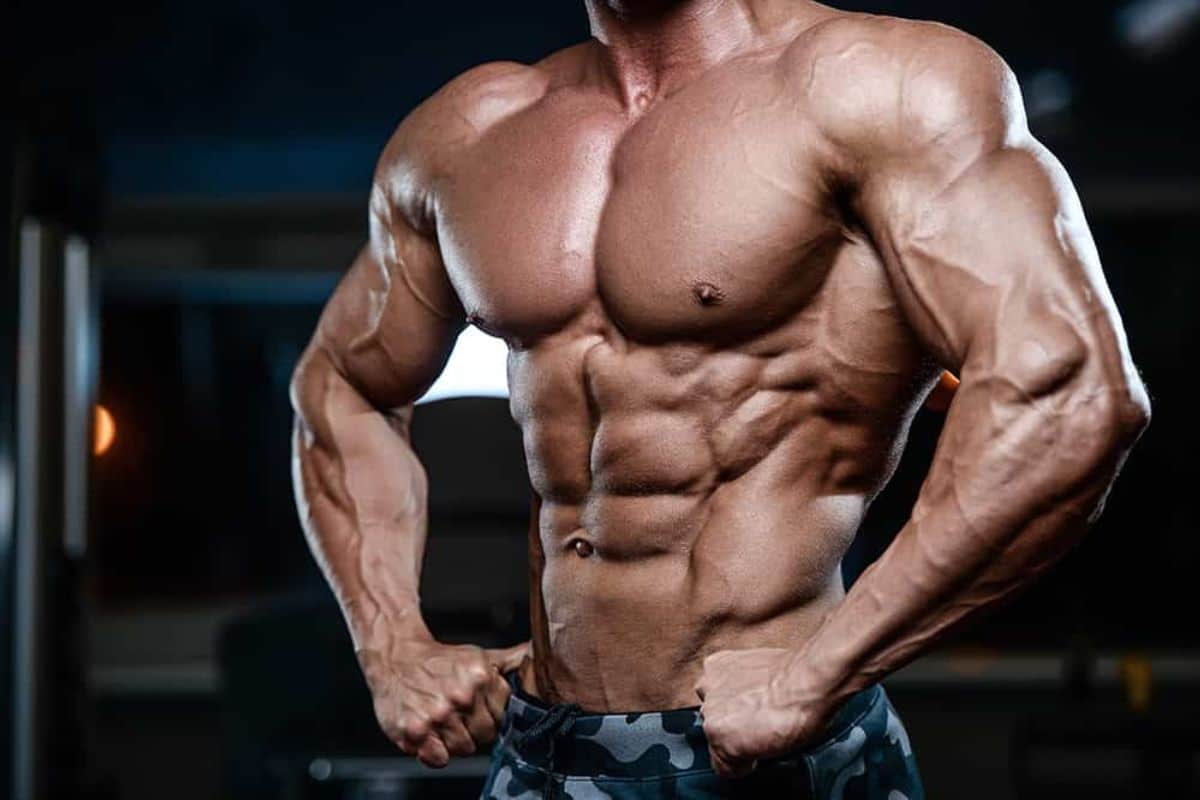Skipping leg day is a common problem with many guys in the gym. Since your legs are covered most of the time, why would it matter if they were small? Well, it does matter, for many reasons.
Not only will you look silly with a huge upper body and a pair of skinny chicken legs, but you will also be missing out on higher releases of testosterone and growth hormone by not training legs. Yes, you read that right, leg exercises such as squats lead to a greater hormone response, which causes the body to release more testosterone and growth hormone. By having higher amounts of these anabolic hormones in your body, you can build muscle faster.
Training legs are easier said than done. If you can push yourself through a grueling leg workout, congratulations you are officially a badass. But now you need to prepare yourself for some seriously stiff and sore leg muscles for a few days after your workout.
If you haven’t trained legs in a while or haven’t been training them hard, I suggest starting easy for the first few weeks to help reduce the amount of pain and stiffness you are probably going to experience. Seriously it’s no joke, walking up or down stairs can become a daunting task. Even sitting on a toilet can be painful.
#1 – The Barbell Squat

The squat is one of the most feared and most effective exercises in existence. Squats are a compound movement, meaning it’s a multi-joint movement where multiple muscles are worked. Your legs, lower back, core muscles, and abs come into play when doing a squat.
While there are many benefits to compound exercises, one of the biggest is the increase in anabolic hormone production.
If you want to build ‘tree trunk’ sized legs, you need to incorporate squats into your leg workout.
How to do a barbell squat:
- Stand in front of the barbell with your feet slightly more than shoulder-width apart.
- Dip your head underneath the barbell placing it on your upper back with an overhand grip.
- Squeeze your trapezius muscles (traps) together and lift the barbell off the rack.
- You are now ready to perform a squat.
- While keeping your head up, back straight and chest pushed out, lower yourself down till your legs reach at least 90 degrees.
- Using pressure through the heels, keep your form and drive yourself back up to the starting position.
<div style="padding-top:56.250%;position:relative;"><iframe src="https://gifer.com/embed/KVSt" width="100%" height="100%" style='position:absolute;top:0;left:0;' frameBorder="0" allowFullScreen></iframe></div><p><a href="https://gifer.com">via GIFER</a></p>
Always have a spotter help you when performing a squat. If you do not have a training partner, take a look at doing smith machine squats instead.
If you have never done a squat before, start light and perfect your form before going heavier.
#2 – The Leg Press

The leg press is another excellent exercise for building up the quadriceps and hamstrings. A leg press machine is known as a resistance machine and only allows for a fixed pattern movement which makes it an easier exercise to perform. The downside of using resistance machines is that no stabilising muscles are used during the exercise.
For beginners or people who have never done squats before, building up the leg muscles with leg presses may be a better idea before starting squats. This will ensure that your leg muscles are strong enough to handle squatting.
How to do a leg press:
- Locate the leg press machine in your gym and sit down on the machine.
- Place your feet shoulder-width apart on the platform directly in front of you.
- Fully extend your legs (do not lock your knees) and release the safety bars.
- Lower the weighted platform slowly until your legs make a 90-degree angle.
- Once your legs reach a 90-degree angle, using pressure from your heels, push the weight back up. Again make sure not to lock your knees.
- Repeat
- Once you are finished, make sure to put the safety bars back in place to prevent the weighted platform from falling on you.
#3 – Dumbbell Lunges

Lunges may look like an easy exercise, but believe me, when done correctly they can be tough. Not only are lunges a great leg exercise, but they also have many other benefits such as improving balance, hip flexibility, and core stability.
How to do dumbbell lunges:
- Stand up straight while holding a dumbbell in each hand.
- Step forward with one of your legs and while keeping your torso upright, lower your hips down so that both of your knees are bent at around a 90-degree angle.
- As with the leg press and squat, place the pressure on your heel to push your leg back up and return to the starting position.
- Now repeat the movement with the opposite leg.
When doing a lunge, to avoid straining the knee joint, make sure that your knee does not go further out than your toes as you step forward and come down.
Lunges require a lot of balance to perform. If you find that you are struggling to keep your balance while doing a dumbbell lunge, try doing lunges without dumbbells until your balance improves.
#4 – Standing Calf Raises
Unless you were gifted with amazing calf genetics, the calf muscles are usually the hardest muscle to build. For this reason, many people neglect training their calves, since they do not see the results they were hoping for. Whether you struggle or not to build your calves, you should still train them. Even if the growth is slow, over time, they will grow bigger.
Apart from aesthetics, having stronger calves helps improve overall leg power. Whether you are squatting, running, jumping, or even walking, the calf muscles play a role, and the stronger your calf muscles are, the better you will be able to perform these movements.
How to do standing calf raises:
- Using a standing calf raise machine, place your shoulders under the pads and place the front part of your foot on the platform with your toes facing forward. (The balls of your feet should be on the platform with your heels extending off of the platform)
- Extend your hips and knees until your torso is straight up. You are now in the starting position. (Throughout the entire exercise, always keep your knees slightly bent and never locked)
- Keeping your knees stationary, raise your heels as high as you can by extending your ankles. Squeeze your calf muscles at the top of the movement, hold it for a second and slowly go back down.
- Repeat
If you have lower back problems or any other issues that prevent you from doing standing calf raises, try doing seated calf raises instead.
Important Notes:
Before starting a workout, always stretch and also warm up first by doing a few light sets.
If you are new to any of these exercises or haven’t trained in a while, make sure to take it easy for the first few weeks. Otherwise, you may find yourself extremely sore and stiff for a while.
Make sure you use proper form with each exercise. If you use bad form, you risk serious injury. Use youtube or consult a fitness professional to see exactly how to perform the exercise’s listed in this article before attempting any of the exercises.
Disclaimer:
Before starting any exercise program, consult a qualified healthcare professional. Genteclabs.co.za and the author of this article, without limitations, are not responsible for any injuries which may occur.











